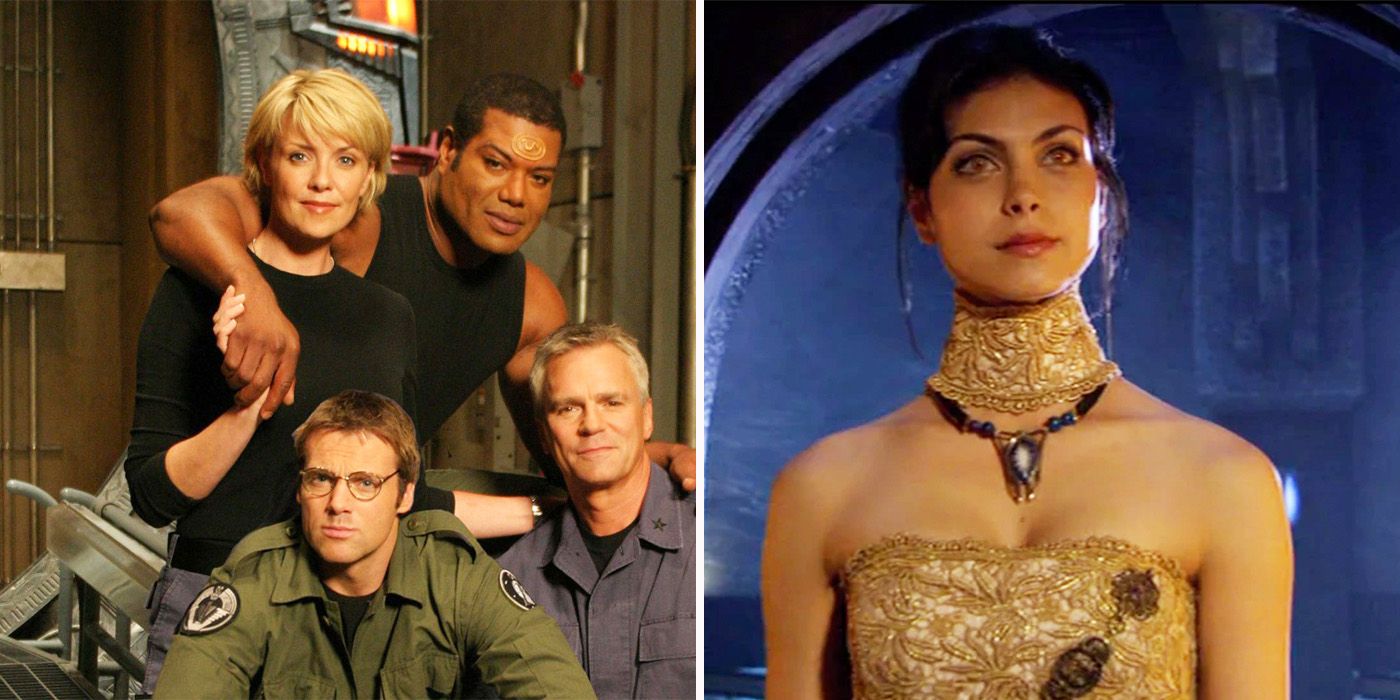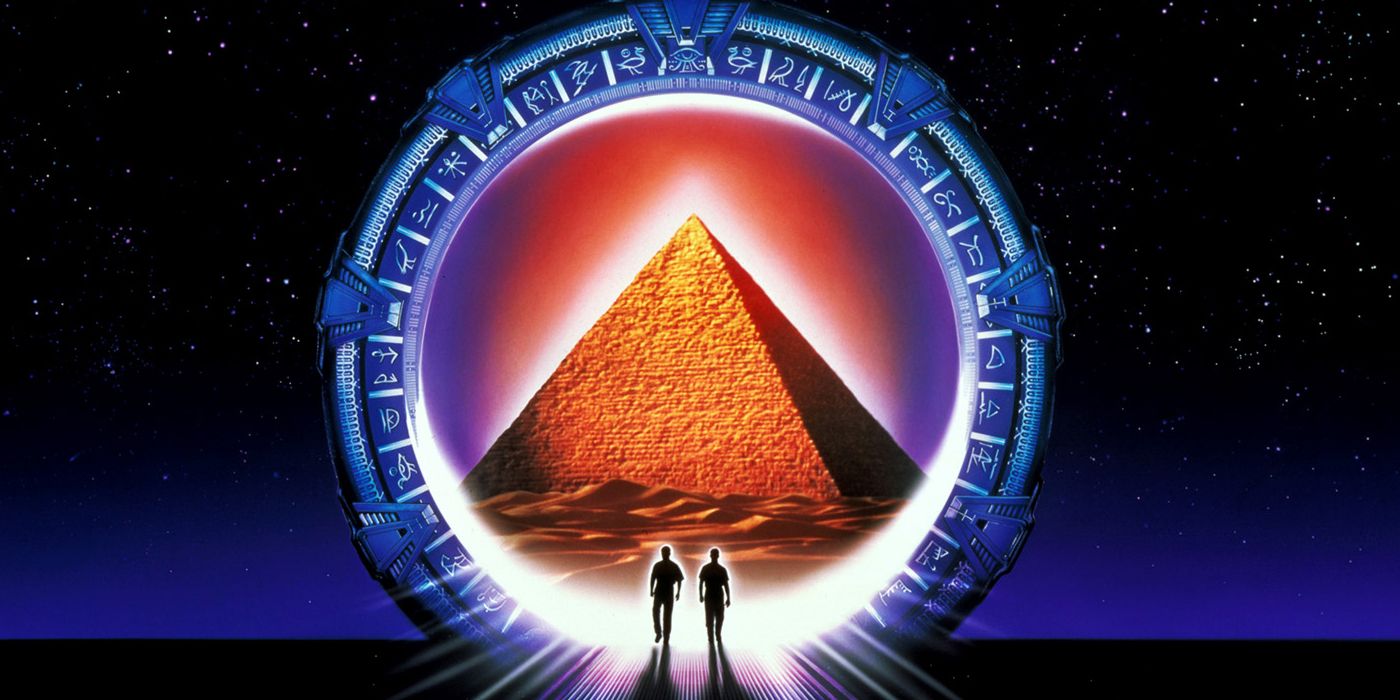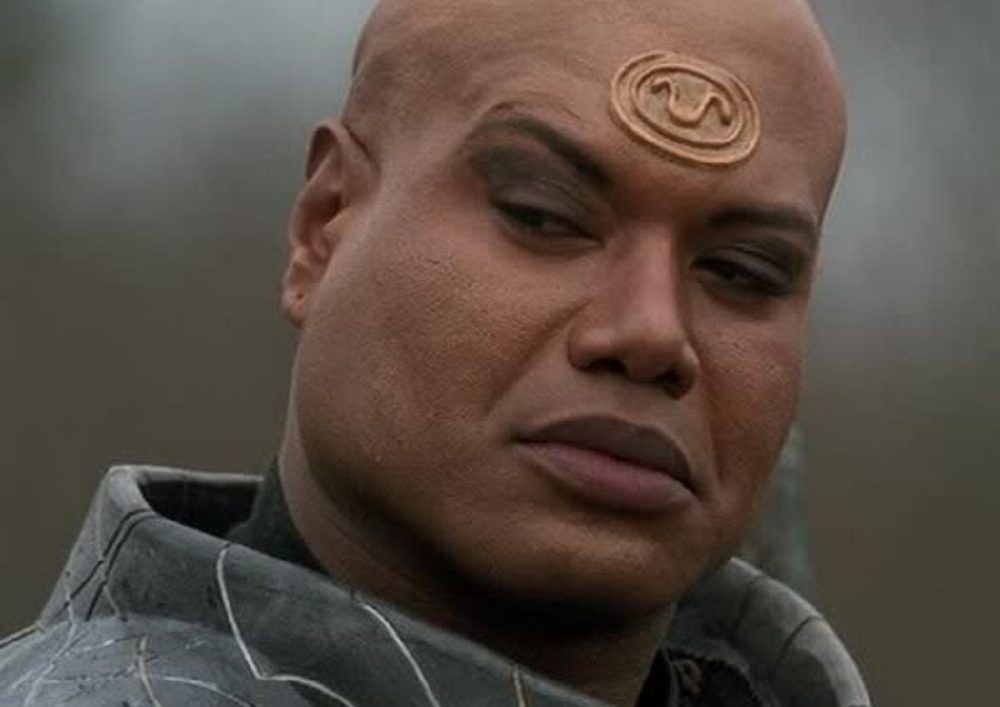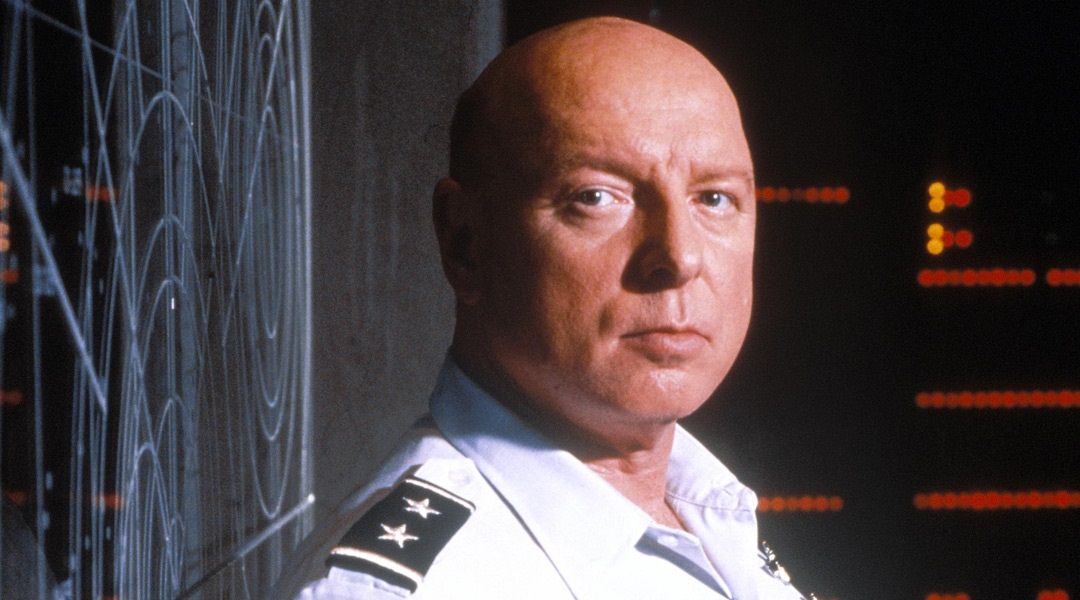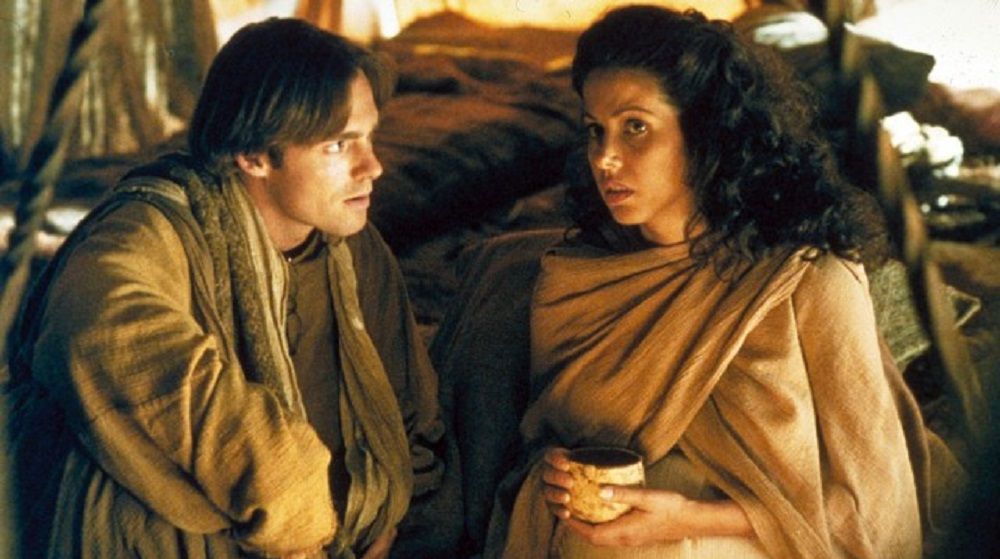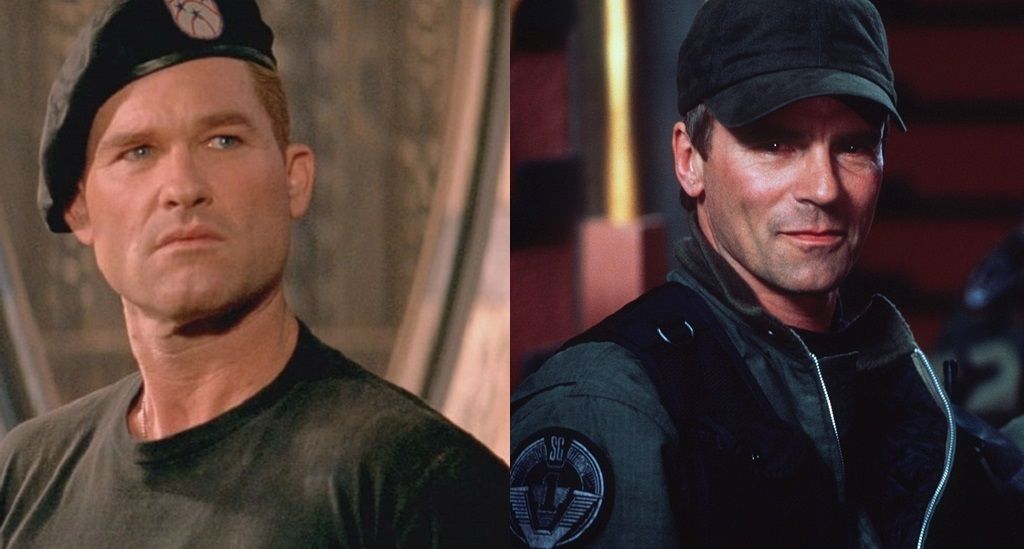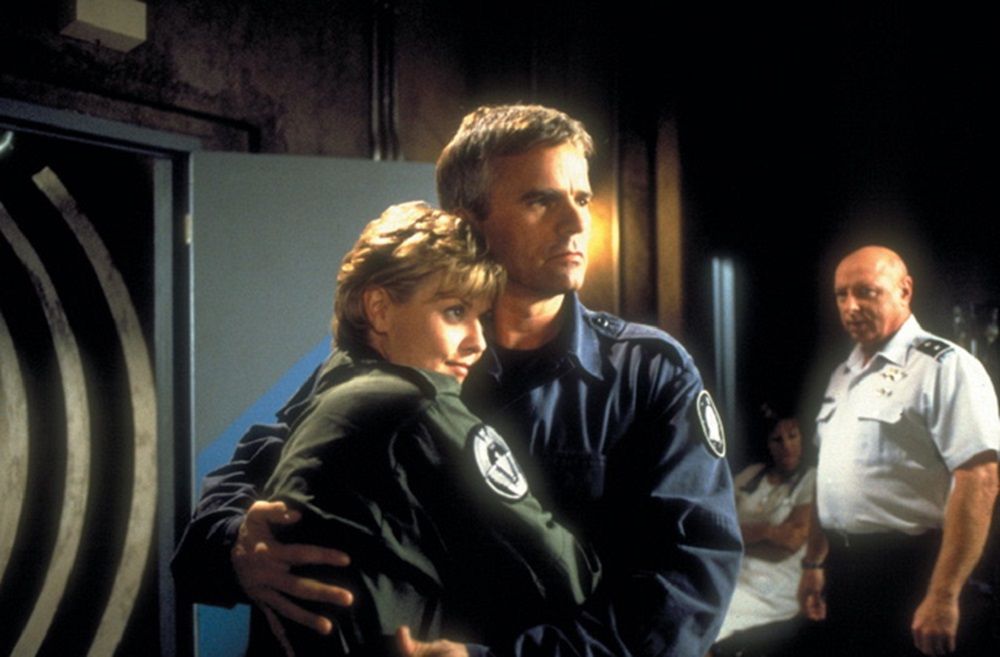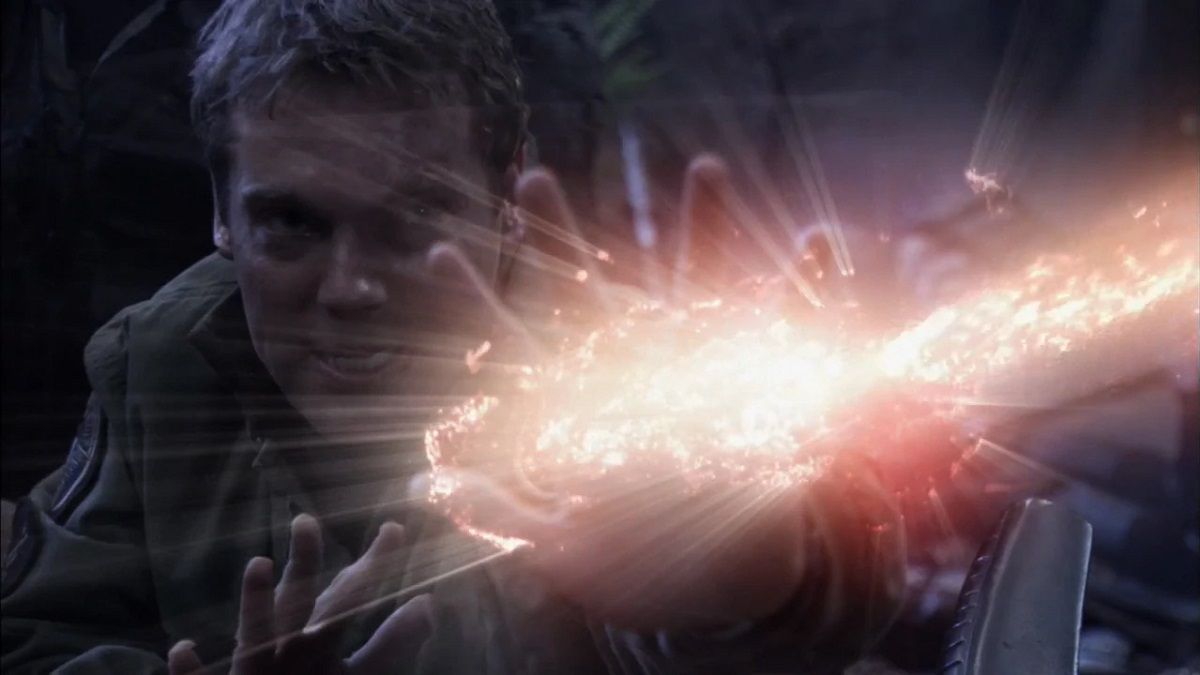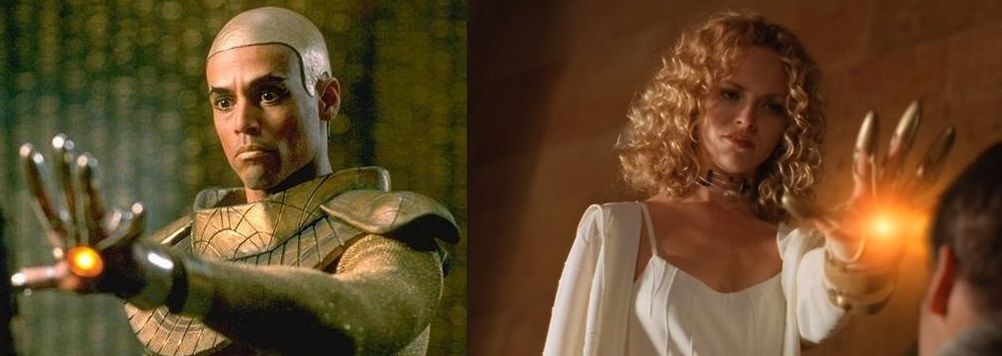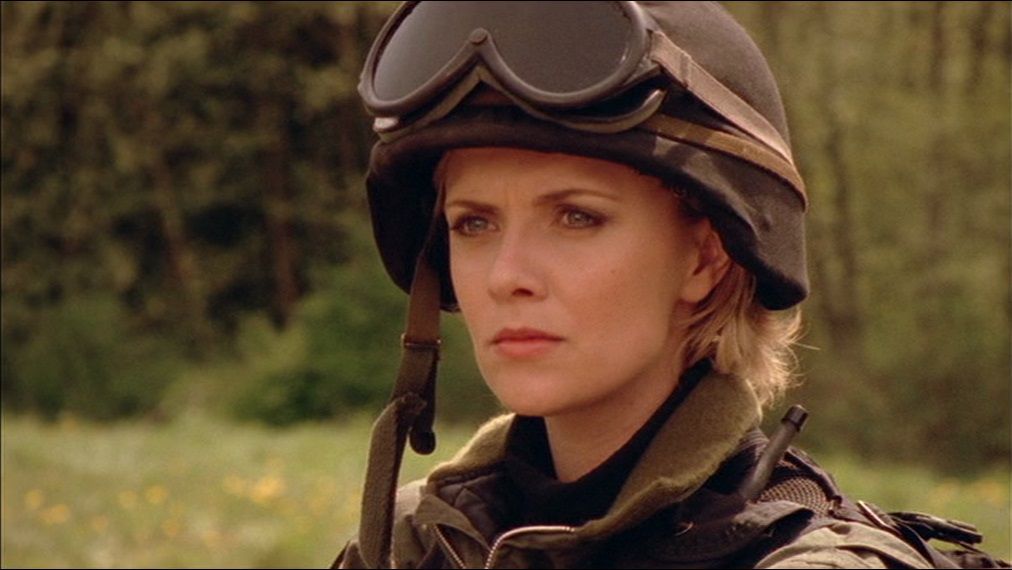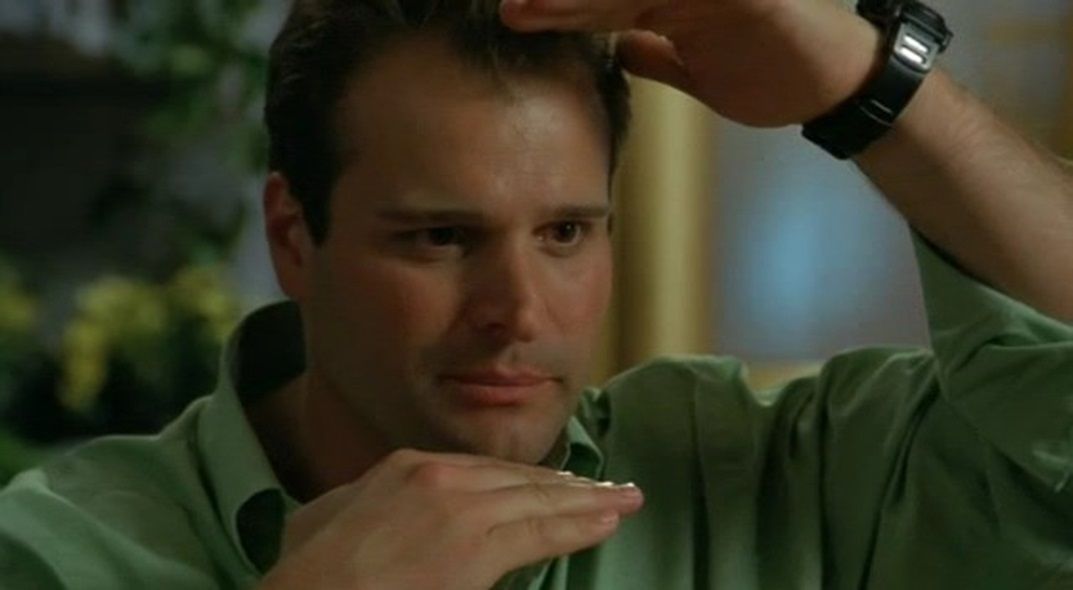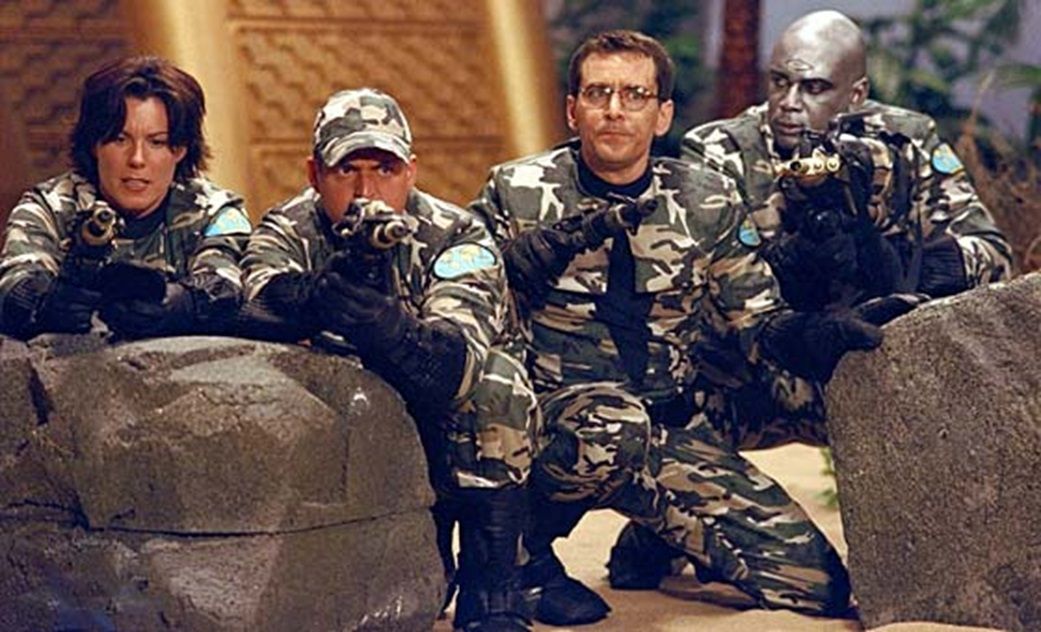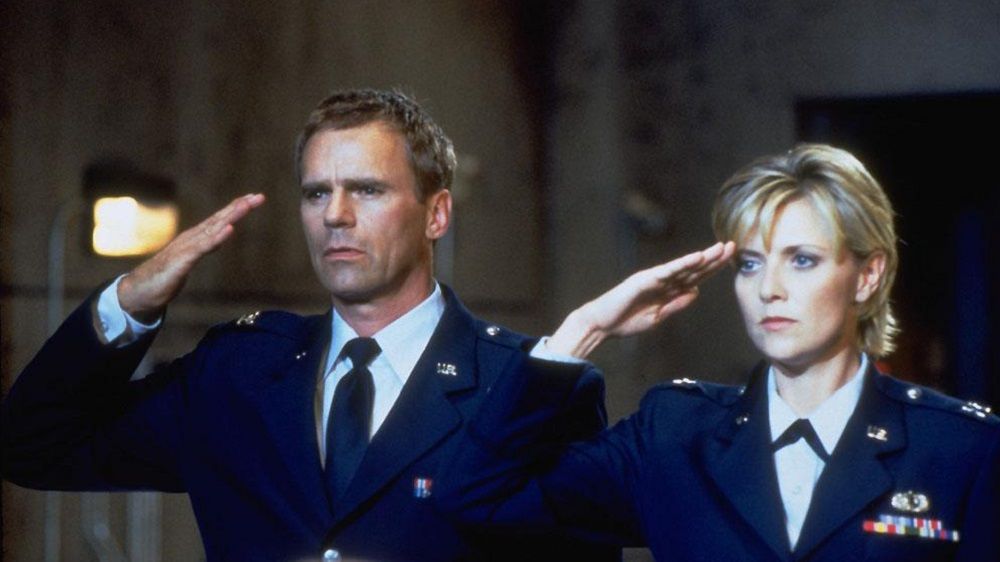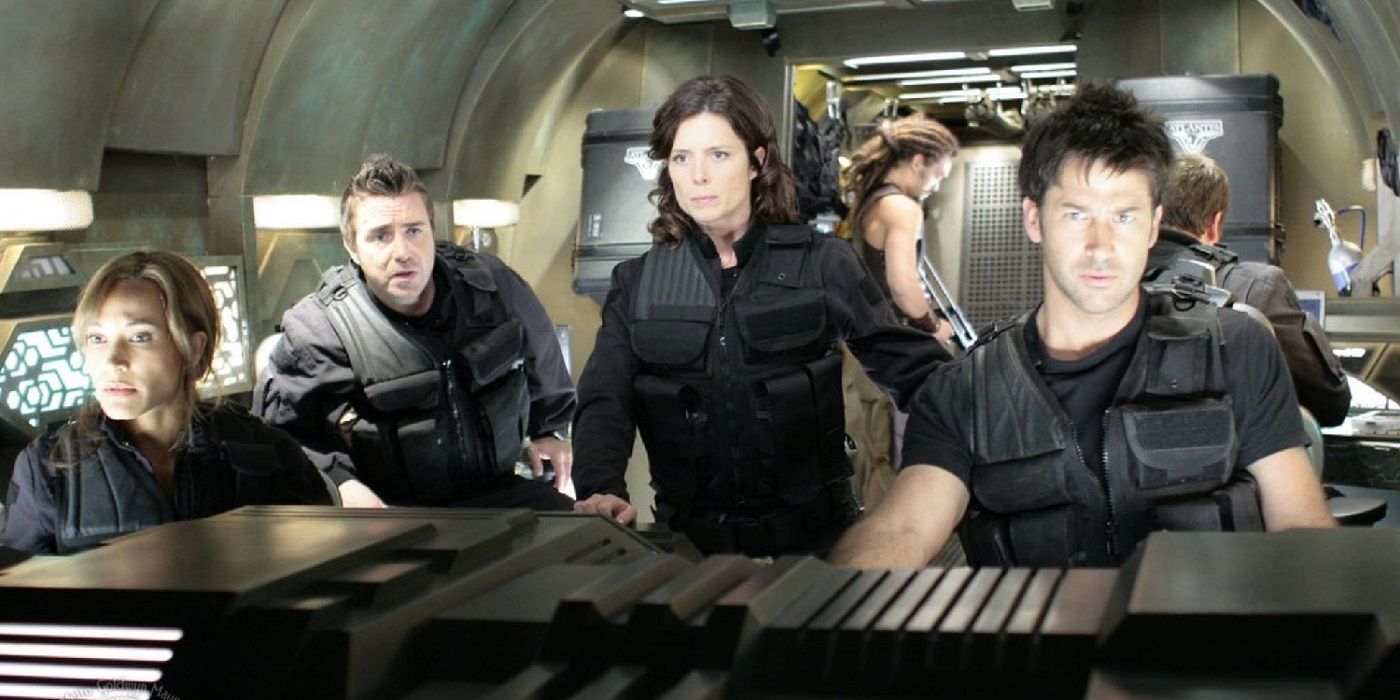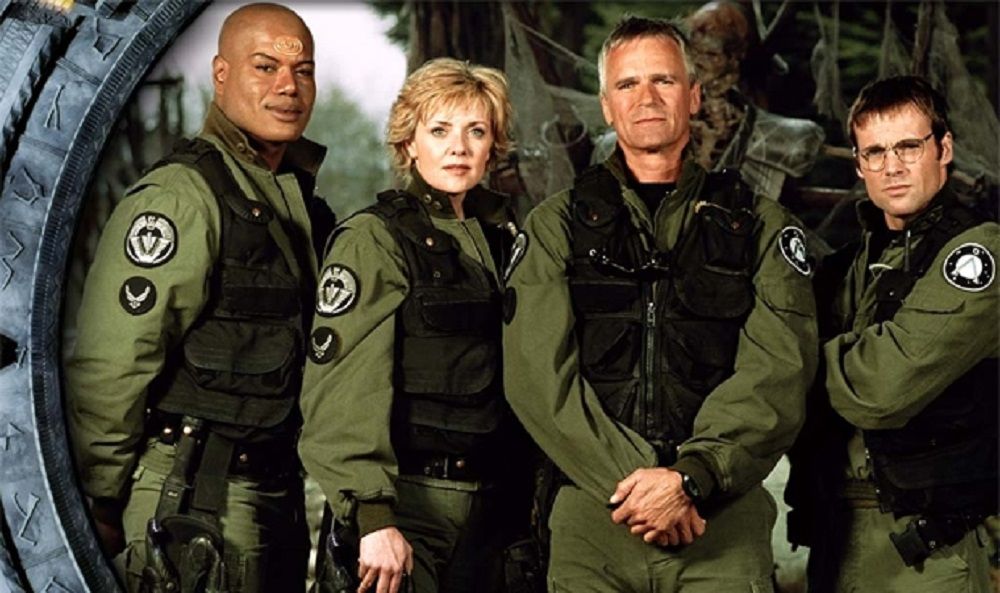Stargate SG-1 has the honour of being the longest running North American science-fiction spinoff series with 214 episodes spanning over 10 seasons. An action-packed space opera, it spring-boarded off the success of the 1994 movie and built up a rich lore drawing on Egyptian, Greek, Norse, Chinese, and Arthurian myths and legends.
When a mysterious device is discovered in Egypt, an elite team of explorers, soldiers, and scientists travel through the interstellar "star" gate and find themselves on another planet. The series picks up a year after the events of the Stargate movie and follows the new team as they use the gate to explore other planets, forge new ties with friendly civilizations, and protect the Earth from hostile forces.
The main antagonists are the extravagant Goa’uld, a symbiotic race who expanded across the galaxy and impersonated the ancient gods of Earth to suppress the attractive host population. These gold-gilded villains are unequivocally evil but manifest in varying degrees of solemn or humorous megalomania. Notable guest stars on the show include Claudia Black, Morena Baccarin, Kevin Durand, and Tony Todd.
Overall, the show manages not to take itself too seriously, even as it delivers a strong character-driven plot. Although it never reached the same popularity as other science fiction "star" franchises such as Star Trek or Star Wars, July marked the 20-year anniversary of the show and it remains a beloved cult classic.
Here are 15 Things You Didn’t Know about Stargate SG-1.
Original Director Roland Emmerich dislikes the series
It is no secret that Roland Emmerich, the director of the original 1994 Stargate movie, wanted to make the film into a trilogy. He is rumored to dislike the Stargate SG-1 series, or at least admits that it went in a totally different direction to his intention with the films.
For a while, a reboot was in the works with Emmerich and original writer Dean Devlin both on board to take the franchise back to basics and finish telling their story in movie form.
Unfortunately, despite the initial momentum and positive fan response, this project seems to be on hold. The main players admitted to having a few projects going at once and the remake simply fell through the cracks.
Teal'c is over 100 years old
Teal’c is the stoic and dependable Jaffa warrior who once served the System Lord Apophis but betrays his cruel overlord to join forces with the SG-1 team at the opening of the story.
As a Jaffa, Teal’c is genetically modified in order to serve as an incubator for a larval Goa’uld in his abdomen. In turn, the symbiote grants him enhanced healing, strength, and longevity. This might explain why in season 4, episode 18, "The Light", he says he is 101 years old.
However, Jaffa ages seem to be a little unusual. During the time dilation troubles of the tenth season finale "Unending", Teal’c ages around 50 years, making him around 155 years old. Then, fellow warrior Bra’tac is stated to be 137 years old in season 5 episode "Threshold" and he looks considerably older than Teal’c.
The one thing we know for sure is that the symbiotes can provide a Jaffa warrior with around 100 years of good health, in exchange for only a lifetime of servitude.
George Hammond really did die of a heart attack
Hammond of Texas became a firm fan favorite for his stern and fair command of the Stargate Program.
The indominable Major General Hammond was on the verge of retirement when the System Lord Aphothis attacked the Earth. He was made Commander-in-Chief of Stargate Command, a position he held for seven years.
Don S. Davis portrayed the General throughout the series. An army Captain once stationed in North Korea himself, Davis was a stuntman, painter, and actor who also had a PhD in Dramatic Theory and Criticism.
Davis retired from the show for health reasons and passed away due to a heart attack in 2008. To honor his contribution to the show, it was written into the story that General Hammond also passed away in the same manner. In honour of the service both character and actor did for the show, the Daedulus-class warship The Phoenix was renamed The George Hammond. A poignant nod to the long-serving hero.
The actress portraying Sha're was actually pregnant with Michael Shanks' first child
Daniel Jackson is the loveable archaeologist who uses his knowledge of Ancient Egypt to help activate the Stargate and joins with the first team to travel through the portal.
After defeating Ra, he falls in love with Sha’re, a native woman, and stays behind on Abydos, planning to stay with them for the rest of his life. Sadly, in SG-1, Apophis takes Sha’re hostage and forces her to serve as a host for his queen, Amonet. When they are finally reunited Sha’re is revealed as pregnant with Apophis’ son, much to Daniel’s shock.
In SG-1, Michael Shanks stars as the floppy-haired hero and Vaitiare Bandera plays his beautiful wife. In real life, the co-stars were dating and during that plotline, Bandera is actually pregnant with Shanks’ first child, Tatiana.
The Stargate effect is a jet engine in water
To create the famous event horizon effect of the Stargate activating, the original special effects team set up an air cannon in a water tank and fired a burst of air into the water.
Additionally, two full physical Stargate props were built for the SG-1 pilot, the second of which was reconstructed from the prop used in the film. The first gate was made of steel and fibreglass and was fully automated to be able to rotate and emit light as it was activated.
Unfortunately, the prop began to get increasingly worn as the show went on. Hence, the travel sequences became shorter and less of the physical Stargate mechanism was seen in action. Still, the original special effects were surprisingly lasting.
O’Neil with Two L’s
In the original Stargate movie, Kurt Russell portrays Colonel Jack O’Neil. In the subsequent television show, Richard Dean Anderson plays Colonel Jack O’Neill. See the difference? One surname has a single "l" and the other has a double letter.
It was in fact Richard Dean Anderson who requested the seemingly insignificant change. He wanted the characterization of the television protagonist to be distinct from the original movie and requested more comedic leeway for his version.
Kurt Russell’s O’Neil is a military stereotype, complete with buzzcut and no sense of humour. Although that worked perfectly in the movie, the series played off the camaraderie of the main team and Anderson’s portrayal fit far better. It left him as a player in the team rather than a stern leader and fuelled plenty of plots where flippant O’Neill was inclined to follow what felt right, rather than the letter of the law.
In an alternative reality, Sam Carter and Jack O’Neill marry
Over the course of the series, Samantha Carter’s and Jack O’Neill’s relationship gradually evolves. Beginning as a purely working relationship, with newbie Sam eager to prove herself to her commanding officer, it evolves into mutual trust and respect after the team face various extreme situations.
Amanda Tapping herself commented on the sexual tension that the pair develop in an interview with Stargate Executive Producer Joseph Mallozzi in 2009. The couple share a frustrating will-they, won’t-they relationship as the show progresses - without ever definitively getting together.
In episode 6 of season 3, Daniel Jackson enters an alternative reality where, amongst other things, the Goa’uld overrun Earth and Sam Carter marries Jack O’Neill. It is hard to say which fact is more shocking to the pair in the prime timeline.
Daniel Jackson dies and ascends to a higher plane of existence. Twice.
It becomes something of a recurring joke that Daniel Jackson dies frequently in the show. All the characters suffer near-death experiences and frequently perish in alternative timelines but Daniel’s life yo-yos the most.
His first death occurs in the film where he takes a staff blast for O’Neil but is revived by Ra’s handy sarcophagus. The whole team die in "Nox" but are resurrected. Daniel’s robot version and alternative versions die in various episodes but his "real" self completely perishes twice.
In season 5, he dies and ascends to a higher plane of existence with the Ancients. But, don’t panic, he retakes human form in season 7 and rejoins the SG-1 team.
If that was not enough, he dies one final time in "Reckoning" before reaching a mid-point between mortality and Ascension. No sweat. He retakes human form in season 8.
Gender is a matter of choice for Goa'uld
The Goa’uld originated on P3X-888. A race of sentient, megalomaniac, parasites, they posed as the gods of lesser species and use them as hosts. Any species who oppose them is completely wiped out.
Goa’uld themselves are sexless, but the gender of individual Goa’uld hosts seems to be a matter of preference. Some Goa’uld, referred to as Queens, can produce larva and seem to prefer a female host. Hathor is a notable example who named herself as mother to all the Gods. The majority of the villainous System Lords are male, like Ra, Apophis, and Osiris.
Known as the First Pharaoh of Egypt, Osiris was once a powerful System Lord. Thousands of years ago, he battled with Ra and was defeated. As punishment, Ra stripped him of his host and trapped him in a canopic jar.
When Doctor Sarah Gardner opened the Osiris jar, he took her as host, showing that the gender of the host seems to be a matter of expedience as much as preference.
Amanda Tapping allegedly pots 3 pool balls in "Upgrades"
Samantha Carter is an astrophysicist, engineer, and pilot. An expert on the Stargate and wormhole theory, she is the one responsible for deciphering the Stargate address system. Fiercely intelligent and loyal to the SG-1 team, she dedicates her life to the Stargate Program and proves herself an all round Big Damn Hero.
In the third episode of the fourth season, "Upgrades", Samantha and the whole SG-1 team are used as guinea pigs for an experiment by the Tok’ra. The team are equipped with armbands that enhance their natural strength, speed and agility. This new-found invulnerability leads to some irrational actions from the team, including a famous scene where Sam Carter trick shots three balls in a game of pool.
In subsequent interviews the team revealed that actress Amanda Tapping had actually made the shot without any camera trickery, proving that both Amanda Tapping and Samantha Carter are equally badass.
Peter DeLuise appeared in every episode he directed
Peter DeLuise served as producer, writer, director, and creative consultant on Stargate SG-1. In the spirit of Alfred Hitchcock, he made a habit of appearing in every episode of the series he has directed.
Usually he would appear as an extra, such as an Air Force man or tech guy in the background. On some occasions he played more prominent roles, voicing the rogue Asgard scientist Loki in the third episode of the seventh season, "Fragile Balance". His father, Dom DeLuise, famously appeared as comic A.I. Urgo in the eponymous episode of the third season. Peter played the young version of the character in the same episode.
In the self-referential 100th episode "Wormhole X-treme!", featuring a corny sci-fi show similar to the real Stargate SG-1, real-life director Peter appears as the fictional director.
There's a show within a show
In 2001, Stargate SG-1 aired its 100th episode.
The series had always been littered with in-jokes and pop culture references. Richard Dean Anderson had previously starred as MacGyver and joking references to "Macgyvering" started as early as the pilot episode. For their 100th episode, SG-1 delivered a tongue-in-cheek show-within-a-show episode.
Wormhole X-Treme! is a camp science fiction show dreamed up by Martin Lloyd. A human deserter from another planet who used to battle Goa’uld, Lloyd has forgotten his past and become a creative consultant for a television series. The parallels between the "real" Stargate program which Lloyd was familiar with and the Wormhole X-Treme! show are clear and very funny.
Jack O’Neill is given the position of Technical Advisor on the show in order to confront Lloyd over his leak of secrets. The light-hearted episode sees the Air Force deciding whether the show is a breach of official information or so silly that it might prevent future leaks being taken seriously. Either way, it is a hilarious situation.
Richard Dean Anderson is made an honorary Brigadier General
In 2004, Richard Dean Anderson received a special award from the US Air Force for his work with Stargate SG-1.
Anderson was made an honorary Air Force Brigadier General for his role as Colonel O’Neill and as executive producer of Stargate SG-1 due to the consistently positive portrayal of the Air Force through the series.
At the Air Force Association’s 57th Annual Air Force Anniversary Dinner, Anderson was presented with the award by Air Force Chief-of-Staff General John P. Jumper. Jumper himself had cameoed in an episode of the seventh season and was not the only Air Force staff member to be given the chance.
After the ceremony, Anderson took time to visit the Walter Reed Army Medical Center and speak with the wounded and ill service members there, showing himself to be a stand-up guy as well as a great actor.
The many spinoff shows
Stargate SG-1 ran for ten seasons and 214 episodes. It was followed by 2 direct to DVD movies, The Ark of Truth and Continuum, to tie up any loose ends left from the long running storylines.
Stargate Atlantis was the first series to grow out of the franchise. It ran for five seasons and 100 episodes, following the adventures of a new team on the Atlantis expedition to the Pegasus galaxy. The expedition is in search of the Lost City of Atlantis, left behind by the highly advanced and powerful race of Ancients, the creators of the Stargates.
Stargate Universe is the final show to spiral out of the franchise. Aired in 2009, it was a bleaker take on the premise and only ran for two series before cancellation. It followed the crew of the Destiny, a ship evacuated several billion light years away and now trying to find the way back to Earth.
Stargate SG-1 became more than a simple light-hearted space opera. In July 2017, a new web series called Stargate: Origins was announced at a San Diego Comic Con Panel celebrating the show's 20th anniversary and showing how the franchise continues to delight and inspire even now.
The show moved from Showtime to Syfy
Stargate SG-1 originally aired on Showtime in 1997. Showtime was an American subscription channel, which ordered the first two seasons of the show. Stargate was the channel’s most watched show and the pilot received Showtime's highest-ever ratings for a series premiere, with an audience of approximately 1.5 million households.
The channel aired series 1 to 5 and then cancelled it in 2002 as it was not bringing in new viewers to the cable service. However, the series was quickly picked up by Syfy – at that time known as the SciFi Channel. Syfy was also the channel to go on and air Stargate: Atlantis and Stargate: Universe, as well as being responsible for other sci-fi giants like Farscape and Battlestar Galactica.
Props to Syfy for choosing to continue the franchise beloved by fans.
---
Do you have any Stargate SG-1 trivia to share? Leave it in the comments!

